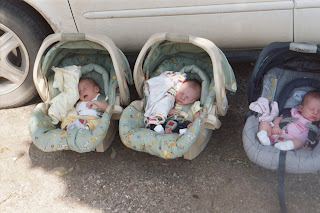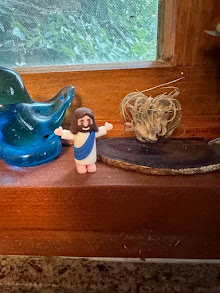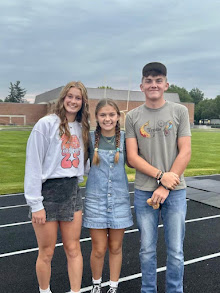
What' s home? We're approaching the week of Christmas, and the highways are full, the airports are overflowing and the schools have let out. The line at Barnes and Noble spread all through the calendars, past the Christmas cards and buy 2, get 1 free games for kids. The checkers called for reinforcements; they were by no means peevish with us customers, but they were decidedly peckish toward any co workers they thought in the wrong place at the wrong time. I assume they were making good money this Sunday morning before Christmas, but if you asked them, I'd also bet they had a list a mile long of tasks to be done at "home".
I just got back from a couple of days in Jefferson City with Blake, followed by an overnight in Springfield. The lights came on in this old house and the little Hallmark ornament chimed in with 'Jingle Bell Rock' when I plugged in the Christmas tree. We completed the familiar routine as Blake off loaded our baggage and I divided the dirty clothes from the clean ones. The house was chill and the hibiscus drooped on the stair landing, but these signs of neglect were easily solved with a tumbler of water and the whoosh of the gas log. Before long, the expectant feeling of our waiting house was supplanted with the grinding of the washer, the cascade of newspapers by the couch and the aroma of c0ffee brewing.
Sunday evening the front of the church was transformed into a friendly living room complete with welcoming hosts, guests decked out in red vests and Christmas sweaters, everyone ready and willing to break into song or read Scripture. The songs were familiar; the story second nature, but peace and comfort spread over the proceedings as the organ rolled, the voices rose and the piano led us through the old, sweet story. Reflect on the adjectives and draw them 'round like your favorite afghan; 'tis the sound and description of home.
Mark and Laura are safely back in St. Louis after our second annual Christmas visit from our Pernod Gardens family. We were jolly and boisterous around the kitchen island, seated in the dining room toasting family accomplishments and New Year's ambitions, but the roof didn't really raise until the kids, already excited by the prospect of opening packages, dived into the big peppermint striped box of goodies, tossing wrappings like the Momma Dog in pursuit of a rodent. Fernando the pinata presented a temporary challenge with three kids coughing and the outside temperature well below freezing, but Abbie solved the problem by jumping on his back. Before we knew it, the volume rose several more notches and little flakes of tissue paper floated down on us like a ticker tape parade. We donned reindeer ears, elf hats with jingle bells, and other even more holly jolly headbands with snowmen and Santas bobbing in agreement that this was a fabulous family party with all the appropriate trimmings. Ben tossed Aaron's new juggling balls; Matt blew up long skinny balloons for animals and head dresses; Kenzie helped LIzzie construct a long domino trail in the dining room while Laura demonstrated proper tiddly wink technic to Abbie. Gabe made mournful whistling sounds with a fascinating colored tube and we cheered on the Rockin' Sock'em robots wielded by Ryan and Matt. Through it all, we avoided stomping on Mr. Josh and he looked on and listened to the merriment. Who knows what went through his baby brain?
After the ball game the four of us walked back home through the chill. The Christmas lights always seem to take on a added clarity and brightness when you walk at night. I know it borders on trite to observe the great leveling effect of Christmas lights; all displays speak to hope and anticipation and even a type of generosity. After all, Christmas lights are rarely "hidden beneath a bushel" or limited to someone's walled and gated backyard. Modest or ostentatious, they are right out there in front for all the world to see.
Blow up Santa has appeared on the front porch in all his illuminated glory. Two years ago, I was craven and overly cute with my attempt to have him waving from the third floor porch. He sagged and wilted under the onslaught of winter's gales. But this year I gave in to the overwhelmingly obvious nature of a blow up Santa; I AM A GIANT INFLATABLE, he proclaims with his sheer existence, I SHALL NEVER BE SUBTLE. To pay homage to his ineffable nature, he waves 24-7, this final week of Advent from the porch, tethered to the lawn chairs in Blake's favorite corner. I like to think the Ghost of Christmas Past would approve.
Aaron and Lizzie look like the little kids "with visions of sugar plums" as they snooze on the floor, wrapped in the Teenage Mutant Ninja Turtles sleeping bag and the Mizzou Snuggie. Their cheeks are rosy and a peaceful snore emanates from time to time. Tomorrow is Christmas Eve, a day of baking and wrapping, followed by an time of reflection and the night of ineffable mystery and wonder. I can never be thankful enough, appreciative enough, grateful enough for the blessings of this my temporal home. I can never fathom the love of a Father expressed in His Son. But I can weep with joy and amazement on Christmas Eve as every mother can and cast my arms and heart wide around my loved ones here at home.






























